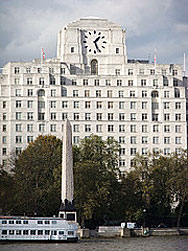Building
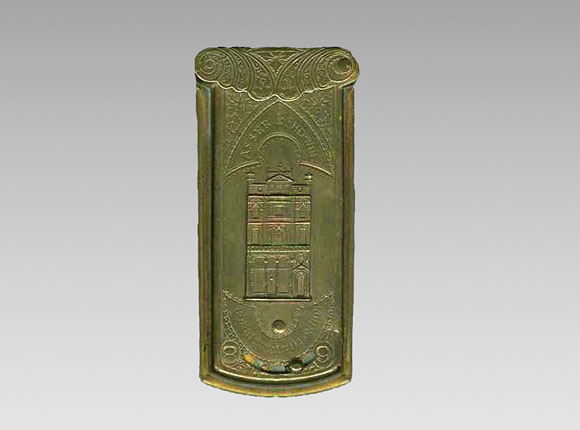
Needle Case (photographs from eBay)
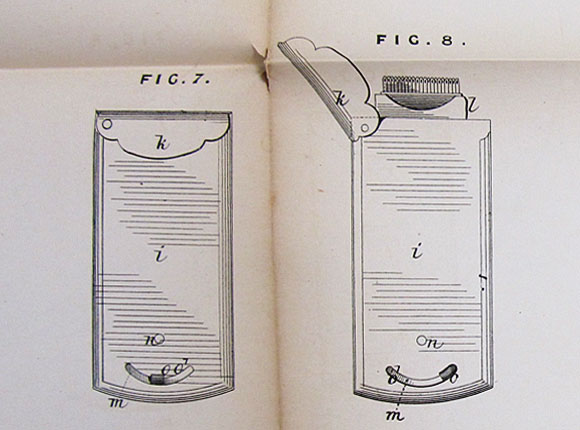
UK Patent 1868-3517 drawing
Design Details
Needle Case Type: |
Quadruple |
Patent/Registered to: |
William Avery, Redditch Needle Manufacturer and Albert Fenton of the same place, Machinist |
Patent/Design Representation #: |
Mechanical Patent: #3517 |
Patent/Design Registration Date: |
November 19, 1868 |
Location of Patent/Design Registration: |
British Library - Business and Intellectual Property Centre – London |
Reference #: |
1868-3517, Figures 7-10 |
Dimensions: |
3.3 x 7 |
Material: |
Brass |
Name Variations: |
Asser & Sherwin - London |
Other Variations: |
See other Quadruples |
US Patent |
US 1870-98904 |
Additional Photographs
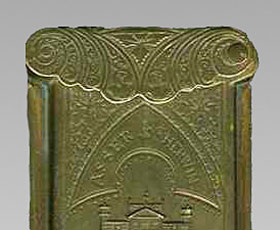
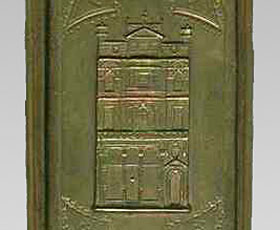
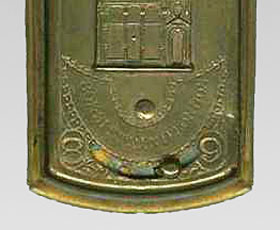
Detail views
Facts
James Asser (1836-1924) and his cousin Charles Sheppard Sherwin (1833-1872) founded the firm of Asser & Sherwin around 1860. They sold
dressing cases, travelling bags, bagatelle boards, billiard tables, and archery and croquet supplies. The firm became successful in part
because the emerging middle class acquired an interest in travel and leisure activities which included playing games and engaging in sporting
events. The exterior of their shop at 80-81 Strand Street in London is depicted on the needle case on this page. The interior of the
building was illustrated in 1875 and clearly shows a beautiful shop, elaborately decorated and filled with fancy merchandise and sporting goods.
Click on the drawing below to see a larger version of it.
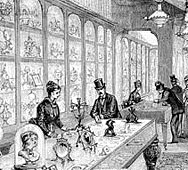
From the Illustrated London News, 1875
History
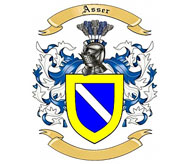
Instituting the use of surnames was a way to identify individuals or related groups. Before record keeping began, most people had only one
name such as John, however as the population increased it became necessary to distinguish between individuals with the same name. The problem
was solved by adding descriptive information based on one of the following characteristic: patronymic (named after a parent), occupational (based on
the person occupation), geographic (based on the place where the person was from) or a nickname based on a physical attribute. As a result
John became John Hunter, John Erickson, John Glasgow or John Cameron (means hook nose in Gaelic).
Asser appears to be an occupational name derived from the French word “assayer” which described an early chemist responsible for establishing the
purity of metals, specifically gold and silver. Sherwin is of Anglo-Saxon origin and was a nickname derived from the words "schere" which
translates as "to cut through" and "wind", the wind, and was a name given to a fast runner or professional messenger. Although the Asser and
Sherwin coats of arms are pictured above and below, there is no evidence to suggest they are in any way associated with the firm Asser & Sherwin
mentioned on this page.
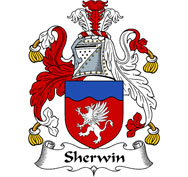
Miscellaneous
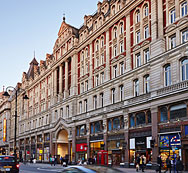
The 19th century Asser & Sherwin shop at 80-81 Strand was destroyed in the 1890s and the block long area from the Strand to the Embankment
(the area next to the Thames River) became the Hotel Cecil which when opened was the largest hotel in Europe with 800 rooms. The hotel building
was demolished in 1930 and the 12 story Shell Mex House was built in its place. This building, known as 80 Strand today, was the corporate
headquarters for the Shell and British Petroleum company from 1932 until the 1990s. The building is renowned for the clock tower on its south
side which is the biggest one in London earning it the nickname “Big Benzene”. The Egyptian obelisk “Cleopatra’s Needle” is located along the
Thames River directly south of the building as seen in the photograph below.
